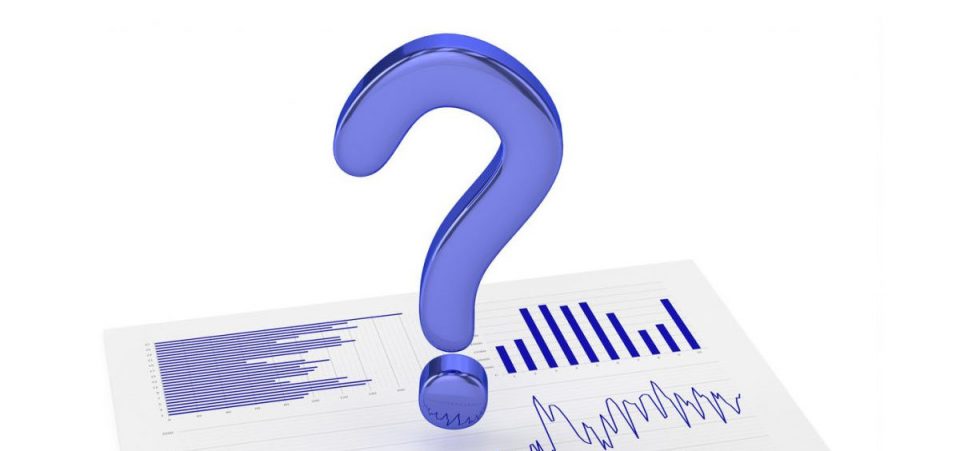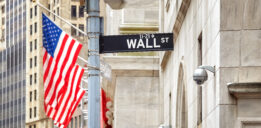Market Volatility 2018
The Dow Jones Industrial Average has recovered some of its recent losses, but investors cannot hide from rising market volatility in 2018. There’s a stark contrast between the optimistic (too optimistic) market expectations that erupted when Congress passed President Donald Trump’s tax reform last December, and the clear 12% market correction in the first week of February.
February 2018 has sent investors clear market volatility indicators. They should not have come as a surprise to anyone.
Warren Buffett did not become a billionaire several dozen times over by throwing caution and dollars to the wind. It turns out, Buffett has been warning that stocks on Wall Street are too expensive. Buffett and a few others at the top of the financial pyramid weren’t shocked by the recent market volatility and its substantial losses, which many seemed to think would never come.
The best that investors can do to confront this forgotten side effect of an overly ebullient market is to ask the following two questions.
Have we reached the final station in the bullish financial season that started in March 2009? Or will the recent correction prove to be a much-needed break from ever-higher S&P 500 records, affording newcomers an opportunity to join the market?
It’s never easy to discern the kind of correction that causes a double-digit percentage dip in the Dow. No matter how experienced or inexperienced they may be, humans are often optimists.
In the case of the financial markets, that’s even more the case. There’s the hope that drives us to recover our money, especially after the first big sign of trouble. Yet, the current financial volatility is no freak incident or temporary phenomenon. Economics 101 tells us there’s more trouble ahead for stocks.
U.S. Market Sell-Off
The trouble that has triggered the U.S. market sell-off was rather unusual. It was good news: the increase in U.S. wages and the declining unemployment rate. It’s absurd; both indicators are signs that the economy is functioning. If investors reacted with fear in the face of a favorable jobs report, it suggests that somehow, there is something wrong.
The report has exposed the weakness in the markets that everyone knew existed yet was afraid to discuss. It was as if the bullish jobs report lifted the carpet, exposing all the dust that had been swept under it.
Simply put, rather than boost optimism, the allegedly better employment numbers have made investors afraid that the higher number of jobs and the higher wages will raise inflationary pressure. They fear that, in turn, the Federal Reserve will react by tightening interest rates at a more frequent and intense pace than anyone had foreseen. After all, it can be argued that Trump’s appointment of Jerome Powell to succeed Janet Yellen as chair of the Fed was a move designed to calm investors’ interest-rate anxieties.
The U.S. market sell-off is all very odd. Most of the world’s countries are experiencing growth now. Europe and Japan, in particular, are seeing the kind of growth last experienced before the 2008 financial crisis. Growing demand and globalization work together such that the good fortune of one economy spreads to the others in the form of increased demand for goods and services. Of course, the opposite is true when one major economy suffers.
But the strange and unfair mechanisms of the economy often challenge common sense. The statistics show that the unemployment rate is 4.1%. That’s the lowest in a decade. Gross domestic product (GDP) is also growing. It was about three percent, right where President Trump wanted it to go. Even if it falls to two percent, it’s still better than the average for the Barack Obama years. In fairness, Obama had to deal with the Great Recession, inheriting a mess from his predecessor.
So, where’s the weak link in this apparently solid chain?
What Is Causing the Current Market Volatility?
The intruder in the idyllic economic picture must be the Trump tax cut. There’s no other factor that has caused more inflation fears—and, therefore, interest-rate fears—than the high-powered fiscal boost that could end up saving taxpayers some $1.5 trillion. But this is what could push the Fed to take premature action against inflation. The problem, however, is not in the economy, but in finance.
While the indicators are pointing to favorable developments, there’s one that is not. The tax cuts have exposed the proverbial elephant in the room; the financial markets have been overheating thanks to cheap money. Low interest rates have encouraged one massive risk-taking party. Investors have ignored gold and silver to dwell on equities.
The quantitative easing (QE) policies deemed necessary to help the economy recover have, especially in the United States, helped fuel speculation on Wall Street, funneling the wealth primarily toward the very sector that caused the 2008 crisis in the first place.
The banks were tight with money. They had little incentive to lend, given the near-zero nominal interest rate. Thus, most average people have had to struggle, relying on alternative lending sources to acquire the automobiles that have helped sustain much of the manufacturing sector.
As for those who can afford to invest, about half of Americans own stocks and the richest 10% of households account for some 80% of the total value of stocks. (Source: “Here’s the really bad news: Only half of Americans actually own stocks,” MarketWatch, February 12, 2018.)
In other words, the Fed could raise interest rates, making life more expensive for the very people who can least afford it, the majority.
Quantitative Easing Is a Financial Drug
The QE policy was supposed to benefit the entire economy. Instead, it created a monster. It became a combination of heroin and cocaine. The first soothed the pain of those who lost everything, including their jobs, in the wake of the 2008 financial crash. The second was intended to stimulate the real economy, making it easier for companies and individuals to borrow.
But lenders had the financial equivalent of shell shock. Those who could, borrowed to fuel another housing bubble thanks to rock-bottom mortgage rates. But many used the cheap credit to speculate. Yellen warned about the role of low interest rates in driving the financial markets.
As early as 2012, the recently installed Fed Chair Powell expressed serious reservations about the low-interest-rate policy that was being pushed. (Source: “New Fed Chairman Powell could have a few surprises in store for the market,” CNBC, February 7, 2018.)
The QE policy was a gamble, of course. It was supposed to help overall economic growth. Instead, after many years of near-zero-cost credit, we realize that the surge of liquidity helped the financial markets most of all.
Now, investors fear that the markets will deflate because they have gone up too much already. The price-to-earnings ratios are too high. They’re at 27–28 times instead of the more usual 22-times average. That would imply a 20% correction in the near term. As it happens, the markets have already shown that there’s plenty of inertia in that bearish direction. Thus, the market correction has begun. And, as a famous song said, it’s only just begun.
Doubt Is in Fashion Again
Financial volatility and doubt have returned to Wall Street. It’s only destined to increase after a long period when investors acted as if they were impervious to doubt. Well, doubt has reappeared. That volatility is marked by human fear that’s amplified by the algorithms and mechanisms that trigger sell and buy orders electronically.
Meanwhile, in the real world beyond downtown Manhattan, apart from the tax cuts, the macroeconomic factors—the fundamentals—have been favorable. Growth is at three percent, as noted earlier. But what happens if, in the next quarter, growth is at two percent?
It could trigger a protracted correction, evaporating all the gains made since Trump was elected. After all, it’s a fair expectation to have after an eight-year bull market. And many are already expecting it. That is, their sentiment has already turned bearish.
And then there’s the market we do not see: thousands of financial instruments that work in the occult, bought and sold after hours, just as the subprime derivatives were. After 2008, apart from helping the socioeconomic tragedy, governments should have intervened to regulate the markets away from the dangerous financial instruments of no real economic or social benefit, such as derivatives.
Who knows if there are other financial instruments lurking that are like the subprime mortgages, which exploded in 2008? The tax cuts could be the “black swan” event of 2018, the veritable straw that breaks the camel’s back. It’s time that investors remember that Wall Street shuns virtue.
“Wall Street never learns.” That’s the one true lesson to remember. It’s a vice that survives all efforts to defeat it.






